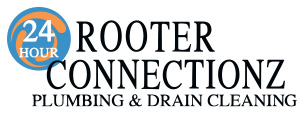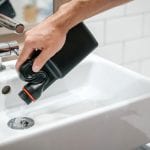There are many areas of home plumbing where both homeowners and professional plumbers will play varying roles, and drain quality is a good example here. While it’s the responsibility of a homeowner and those living in a given home to take good care of their drains and maintain general drain quality, plumbers also regularly assist clients with long-term maintenance themes like drain cleaning, drain repair and others that may impact water flow in your important drains plus your main sewer line.
At 24 Hour Rooter Connectionz, we’re proud to serve as your one-stop shop when it comes to all drain cleaning, sewer line repairs and numerous other plumbing and HVAC services. We work directly with and in support of our clients, assisting with everything from basic tips on how to care for your drains to specific services like drain cleanout or pipe jetting. This includes assistance with certain DIY home areas for drains – but also certain themes you should not try to handle on your own, and should rather be leaving for our plumbers for both safety and quality reasons. Here’s a detailed primer on several DIY drain care areas, from daily usage to chemicals and other solutions, plus when it’s time to swallow your pride and call in a plumber for assistance.
Improper Drain Usage
First and foremost, one of the top causes of drain issues within homes is improper usage of said drains to begin with. Specifically, there are numerous products or materials put down drains, whether we’re talking sink drains, toilet drains or others, that simply should never go down them. These items may include all of the following:
- Starchy items like pasta, rice, potatoes and others (these should not go down the garbage disposal, either)
- Greases, fats or various forms of oil
- Eggshells and various types of bones
- Stringy or fibrous foods that may create blockages
- Coffee grounds
- Tissues, paper towels and other related products
- Feminine products like sanitary napkins and others
- “Flushable” wipes (this term is deceptive, at best)
- Clumps of hair
Rather, drains should be heavily limited in terms of what goes down them. Most water and liquids are okay, at least in sink drains – but toilet drains should have nothing but human waste and approved toilet paper products flushed down them, period. You’d be surprised how quickly you may be dealing with major drain or main sewer line issues in your home if you’re regularly sending unapproved items down the drain.
Drain Chemical Issues
For many dealing with any kind of drain clog, the first approach is to reach for the chemical drain cleaner as a solution. And while this sort of product might indeed help with your temporary problem, it’s actually doing more harm than good in the long run.
This is because drain cleaners made from chemicals are harmful to your pipes over time. Many of their bottles claim to be “safe” for pipes or have qualities that reduce corrosion, but these are not true – all drain cleaning chemicals will wear down your drain over time, and could eventually lead to major cracking or leaks.
The only commercial liquid that you should ever use to clean your drains is an all-natural enzymatic product. These use natural enzymes to break down materials clogging up drains, enzymes that will have no impact on the actual pipes themselves over the course of a period of time. However, these solutions will only work for minor clogs, not for more significant ones.
Simple DIY Solutions
Luckily, there are two very simple DIY solutions that are generally available for standard drain clogs or even routine drain cleanouts. These are as follows:
- Hot water: Heat your tap to very hot, but just before boiling point. Take a large pot of this water and pour it down the drain that’s in need of cleaning, then wait just a minute or two before pouring a similar amount of cool water down the same drain. The hot water that comes first will loosen up many clog types, including melting certain stuck-on buildups, while the cold water second will flush away any clogs you’ve just dealt with.
- Baking soda and vinegar: Pour half a cup of baking soda down the drain in question, then follow that up with a half cup of vinegar. This is best done at night after the drain is done being used, and allows you to let it sit overnight. In the morning, flush the drain with hot water and notice how much clearer it is.
Other Options
If the above issues do not work for a clog you’re experiencing in a drain, you have a couple physical solutions you might consider as well:
- Plunger: The type of plunger you use will depend on which drain you’re dealing with, but it will likely either be a cup or flange plunger. This item allows you to create a major seal of air around the drain, then push the clog through the drain so it’s no longer an issue.
- Snake or auger: This is a tool that’s fed through the drain, with a handle that spins and hooks onto any clogging items, allowing you to pull them out.
Calling in the Pros
No matter your level of comfort or experience with any of the above DIY areas, it’s vital to have a local plumber on-hand to assist if things move beyond the point where your sills are viable. For some homeowners, this might mean assistance with certain parts of what we’ve already gone over here if you’re not comfortable; in other cases, handy homeowners will only call in our plumbers for detailed jobs like sewer line jetting or others that require specific professional training.
For more on DIY methods to prevent drain clogs plus important mistakes to avoid within these, or to learn about any of our drain cleaning, other plumbing or even HVAC services, speak to the staff at 24 Hour Rooter Connectionz today.


